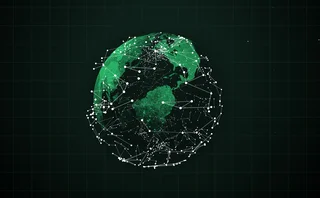
GL Trade connects to Onexchange
GL Trade, a provider of exchange connectivity, is to connect its front-end trading platform to electronic market-place provider Onexchange to allow its clients to create and clear over-the-counter and exchange-traded derivatives instruments in real time.
GL Trade already offers access to Liffe Connect and the Chicago Mercantile Exchange’s Clearing 21 modules via an API and plug-ins, Onexchange chief operating officer Ed Cuoco said.
Onexchange hopes to create a new category of customisable OTC derivatives that can be created and cleared in real time, with snapshots of current positions always available. Clearing is typically a batch process that only divulges updated positions periodically, Cuoco said. Firms can use Onexchange’s snapshots and pipe the data into their risk analysis software at any time, with the confidence that their positions are always updated.
Onexchange and GL Trade’s venture comes at a busy time in the futures market, with a Brokertec-Board of Trade Clearing venture announced and the Euronext-Liffe acquisition unfolding. But Cuoco claimed that while exchanges have begun to "commercialise" their in-house clearing solutions for other exchanges and firms, their core technology tends to be of 1980s vintage, is mainframe-based and is buried under layers of other vendors’ products.
"Today, if you try to add a new product to a derivatives exchange, a lot of intermediaries have to make changes," Cuoco said. "If you add an OTC product or a new delivery instruction, that change can take months. Our system is multi-parameter based, because of Java, XML and FIX; what clients are getting is a shared data model of an instrument that can inherit behaviours throughout the system."
Onexchange is looking into running more services on FpML, the derivatives markup language, but there has "not been a tremendous amount of pull" from clients for the standard, Cuoco said.
The connections between the GL Trade screen and Onexchange will be invisible to the user, facilitated by TCP/IP connections over a virtual private network or the public internet, Cuoco said. The clearing software runs on a Windows NT platform on Sun Solaris machines, but Onexchange will be announcing support for other platforms, presumably including Unix, shortly.
Clients in the usability-testing phase do not initially have to purchase the thick-client server that communicates with Onexchange; rather, they can log in to a staging system on an application service provider model.
If the client does decide to take the service, configuration is necessary through the GL Trade front-end and the networking infrastructure on the back-end. This process can take up to several months. Onexchange will soon be announcing partnerships with network providers to manage these connections, Cuoco said.
The final product, for which development began in August, will be demonstrated at the Securities Industry Association Expo conference in Chicago on November 28-30, said Cuoco. Financial terms and clientele were not disclosed.
GL Trade executives were not available for comment.
Only users who have a paid subscription or are part of a corporate subscription are able to print or copy content.
To access these options, along with all other subscription benefits, please contact info@risk.net or view our subscription options here: http://subscriptions.risk.net/subscribe
You are currently unable to print this content. Please contact info@risk.net to find out more.
You are currently unable to copy this content. Please contact info@risk.net to find out more.
Copyright Infopro Digital Limited. All rights reserved.
You may share this content using our article tools. Printing this content is for the sole use of the Authorised User (named subscriber), as outlined in our terms and conditions - https://www.infopro-insight.com/terms-conditions/insight-subscriptions/
If you would like to purchase additional rights please email info@risk.net
Copyright Infopro Digital Limited. All rights reserved.
You may share this content using our article tools. Copying this content is for the sole use of the Authorised User (named subscriber), as outlined in our terms and conditions - https://www.infopro-insight.com/terms-conditions/insight-subscriptions/
If you would like to purchase additional rights please email info@risk.net
More on Technology
Dismantling the zeal and the hype: the real GenAI use cases in risk management
Chartis explores the advantages and drawbacks of GenAI applications in risk management – firmly within the well-established and continuously evolving AI landscape
Chartis RiskTech100® 2024
The latest iteration of the Chartis RiskTech100®, a comprehensive independent study of the world’s major players in risk and compliance technology, is acknowledged as the go-to for clear, accurate analysis of the risk technology marketplace. With its…
T+1: complacency before the storm?
This paper, created by WatersTechnology in association with Gresham Technologies, outlines what the move to T+1 (next-day settlement) of broker/dealer-executed trades in the US and Canadian markets means for buy-side and sell-side firms
Empowering risk management with AI
This webinar explores how artificial intelligence (AI) can strip out the overheads and effort of rapidly modelling, monitoring and mitigating risk
Core-Payments for business leaders: why real-time access to payment data is key to long‑term business success
Business leaders require easy access to timely, reliable and complete information across post-trade processes. Aside from the usual requirements of senior managers to optimise for risk, revenues and costs, they increasingly need to demonstrate to their…
Risk applications and the cloud: driving better value and performance from key risk management architecture
Today's financial services organisations are increasingly looking to move their financial risk management applications to the cloud. But, according to a recent survey by Risk.net and SS&C Algorithmics, many risk professionals believe there is room for…
Machine learning models: the validation challenge
Machine learning models are seeing increasing demand across the capital markets spectrum. But how can firms improve their chances of gaining internal and regulatory approval for these type of models?







